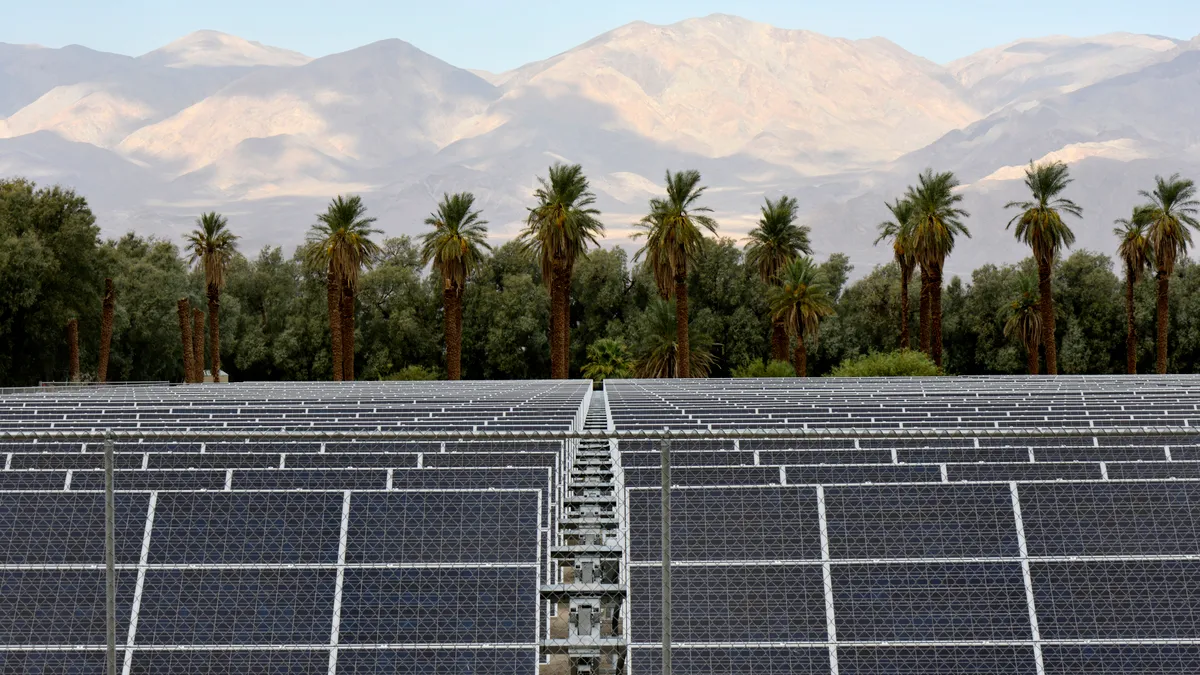Dive Brief:
- The California Public Utilities Commission on Thursday approved three energy project contracts proposed by San Diego Gas & Electric, as well as four contracts proposed by Southern California Edison, that will collectively provide more than 800 MW of new solar and storage capacity to help ensure the reliability of the state’s electric grid this decade.
- SDG&E’s proposal included one hybrid solar and storage project, expected to come online in June, as well as two battery storage projects scheduled to come online in mid-2024. SCE’s proposal, meanwhile, comprised four front-of-the-meter energy storage projects.
- The projects are the result of solicitations conducted after the CPUC approved an 11.5-GW procurement package in 2021. The order aims at ensuring the reliability of California’s grid toward the middle of the decade, and marked the agency’s largest-ever capacity procurement in one shot.
Dive Insight:
The CPUC’s 11.5-GW mid-term reliability procurement order sought to meet the state’s grid needs between 2023 and 2026, given the then-planned retirement of the 2.2-GW Diablo Canyon nuclear power plant by 2025, as well as the closure of several natural gas plants. The state is now considering extending the life of the Diablo Canyon plant through the end of the decade. However, it continues to focus on procuring new clean energy resources to meet grid needs, with the 2021 decision requiring 2 GW to come online by August, another 6 GW by mid-2024, followed by installments of 1.5 GW and 2 GW in 2025 and 2026, respectively.
In September 2021, SDG&E issued a request for offers to meet its share of these procurement needs, and then reopened the solicitation last April for new bids as well as updates to previous ones. It filed a proposal with the commission in October, seeking approval of two lithium-ion battery storage projects – the 80-MW Bottleneck project and 100-MW Cald project – as well as a 20-MW hybrid solar and storage facility. SCE, meanwhile, also launched an RFO in 2021, and filed its latest proposal with the commission in October, proposing four storage projects, ranging from 69 MW to 230 MW, for a combined capacity of 619 MW.
The expedited approval of the four energy storage contracts from the commission will help provide certainty to maximize the likelihood of bringing the projects online on time, according to SCE spokesperson David Song.
“[T]his energy storage will provide additional reliability to the grid, especially during the critical hours of 4 p.m. to 9 p.m," Song said, adding that "they can also be used to respond to the CAISO's signals, high-demand events, heat waves, or when the energy grid is strained, as we saw last September.”
Both utilities’ proposals received pushback from the CPUC’s Public Advocates Office, which filed protests with the commission in November. In the case of SDG&E’s request, the office notes that the Inflation Reduction Act, signed into law in August, created an investment tax credit for standalone energy storage resources, and that SDG&E did not try hard enough to negotiate down the price of two of its projects to account for that.
SDG&E has pushed back on these arguments, noting in a filing with the commission that trying to restart negotiations for the contracts would slow down the approval process and jeopardize the projects.
The Public Advocates Office also raised concerns with SCE’s proposal, saying that the utility might be overpaying for one of its contracts. In response, the utility reiterated that its proposed contracts are “the least cost, best-fit resources'' to meet its procurement targets.
The commission concluded in its decision that SDG&E’s solicitation was managed reasonably and that re-negotiating contracts at this stage would threaten its ability to meet procurement requirements. And while the agency voiced concerns that utilities not overpay for procurement, it concluded that SCE has opted for “least cost, best-fit” resources.















